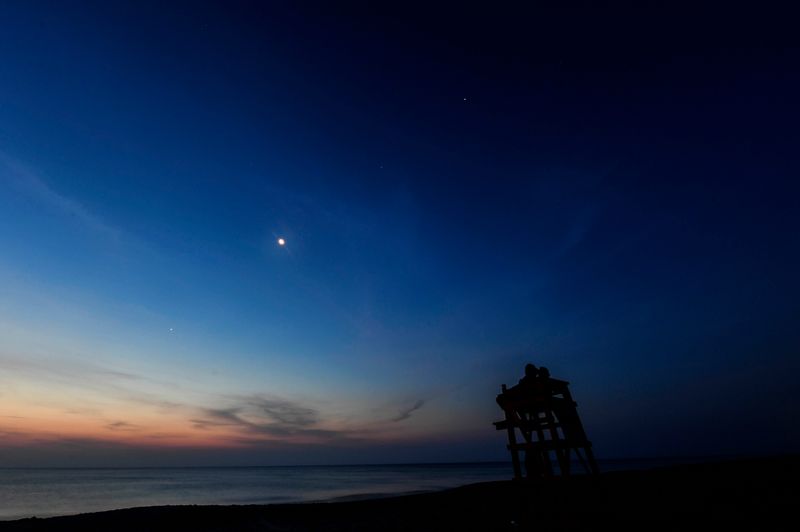
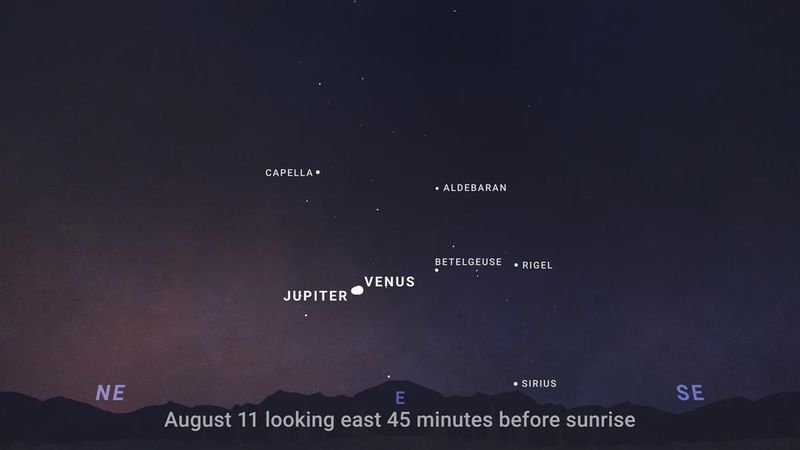
From meteor showers to visible nebulas, August is primed to be an action-packed month for stargazers in the United States.
And one of the highlights of the month? The impending meet-up of Jupiter and Venus.
The gas giant Jupiter, our solar system's largest planet, is due to make a close approach in August with Venus, NASA said in an August skywatching guide. The rendezvous, known in astronomy terms as a conjunction, comes a few months after Venus underwent an inferior conjunction in March – meaning it appeared in the sky after sunset and again before sunrise.
What that means for observers here on Earth is that both planets should be visible together for the next few days.
Here's what to know about the Venus-Jupiter conjunction, and how to see the two bright planets in August.
What is a planetary conjunction?
A planetary conjunction is an astronomical event in which at least two planets – sometimes more – appear to our vantage from Earth to be close together in the sky.
Even though the planets are in reality still tens of millions of miles apart, the events present a special opportunity for astronomers and casual stargazers to see multiple worlds in our solar system at one time.
So, what causes conjunctions to take place?
As planets in our solar system orbit the sun at varying speeds, sometimes their orbital paths bring them close together on the same side of the sun. When this event lines up with our view from Earth, we get a conjunction, according to the nonprofit Planetary Society.
When is the Venus-Jupiter pairing?
Venus and Jupiter are making their close approaches to one another and will shine brightly to the east before sunrise throughout August, according to NASA.
The planets should appear closest to one another between Aug. 11 and 12. What's more, Venus and Jupiter's cosmic rendezvous should take place against a backdrop of bright stars – including Orion, Taurus, Gemini and Sirius.
A crescent moon, appearing as a thin sliver, should even join the planets in the sky after they separate again Aug. 19-20.
How to see Venus, Jupiter conjunction in August
While telescopes certainly will enhance the view, spectators don't necessarily need any equipment to spot Venus and Jupiter in the pre-dawn sky from the Northern Hemisphere. Why? After the sun and moon, they're the two brightest objects in our solar system.
Seek out locations with unobstructed views of the horizons and check the weather forecast to ensure skies will be clear. Then, simply look to the east to find what will appear as two uncommonly bright stars, and you're likely looking at the two planets.
Eric Lagatta is the Space Connect reporter for the USA TODAY Network. Reach him at elagatta@gannett.com
This article originally appeared on USA TODAY: Jupiter-Venus conjunction: How to see our solar system's 2 brightest planets in August
Reporting by Eric Lagatta, USA TODAY NETWORK / USA TODAY
USA TODAY Network via Reuters Connect

 USA TODAY National
USA TODAY National
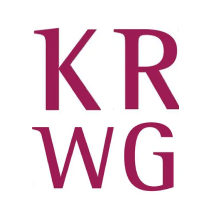 KRWG Public Media
KRWG Public Media New York Post
New York Post CBS News World
CBS News World The Federick News-Post
The Federick News-Post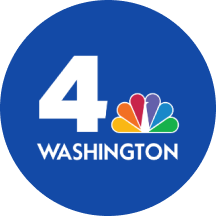 NBC4 Washington
NBC4 Washington The Daily Beast
The Daily Beast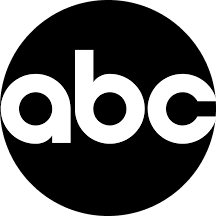 ABC News Video
ABC News Video Wheeling Intelligencer
Wheeling Intelligencer 5 On Your Side Sports
5 On Your Side Sports